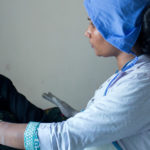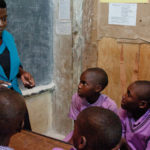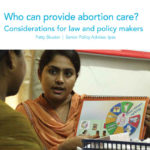
For women who want to end their pregnancies, laws that allow only medical doctors to provide abortion are real barriers. Abortion can safely be provided by nurses, midwives, paramedical personnel and other midlevel providers. Women who have correct information can take pills to end a pregnancy safely outside a health facility. However, many abortion laws require the involvement of one or more medical doctors. These laws criminalize women and other health professionals who end pregnancies safely without a doctor. Under doctor-only laws, health systems—particularly in the global south—cannot train enough abortion providers to make abortion accessible to all women. Doctor-only laws discriminate against women who belong to vulnerable and disadvantaged groups and who are least likely to have access to medical doctors. Lawmakers need not designate who can provide abortion in the law. Documents such as national health standards and guidelines are better suited to clarify who are authorized providers. This publication explains how Standards and Guidelines, enacted by the Ministry of Health and ideally updated every few years, can reflect the latest scientific evidence in abortion care.
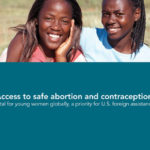
The United States, as the world’s foreign assistance leader, must play a key role in safeguarding a comprehensive and integrated approach to sexual and reproductive health and rights for young women. This fact sheet outlines policy challenges that deny young women their sexual and reproductive rights and puts forth policy actions the U.S. government should take: expand family planning funding, repeal the damaging Helms Amendment, permanently repeal the Mexico City Policy (also called the Global Gag Rule), and continue to work toward a progressive sexual and reproductive health agenda in platforms like the International Conference on Population and Development and the United Nations.
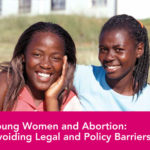
This resource is designed to help advocates and policymakers promote laws and policies that support access to safe abortion for young women. Parental involvement requirements in law or policy are common barriers that push young women toward illegal and often unsafe abortion.
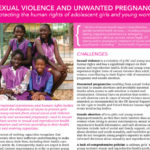
This publication provides evidence and explanation for why Ipas urges governments and policymakers to ensure that all young women—including survivors of sexual violence—have access to comprehensive sexual and reproductive health care, including safe abortion services.
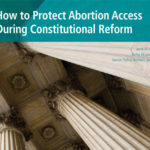
This toolkit is designed to help reproductive rights advocates participate in national constitutional reform processes. It looks at the potential consequences of constitutional protection of life at conception and outlines ways reproductive rights advocates can influence the constitutional reform process. It also may be useful for advocates facing constitutional amendments or engaging in litigation.
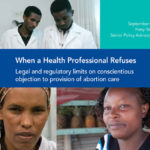
Health professionals’ refusal to provide service that they oppose on moral or religious grounds is a significant barrier to women’s access to safe abortion and other reproductive health services. This resource contains recommendations for enacting laws and regulations that safeguard women’s access to services while still protecting providers’ rights of conscience. It also provides information on human rights standards that address provider refusal and includes a list of further resources.
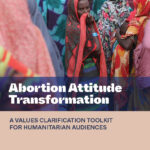
Abortion by trained providers is a safe and common procedure, legal under at least one condition in nearly every country in the world. Yet women and girls living in humanitarian settings often cannot get this essential reproductive health service—even when it’s available to other women in a country hosting refugees.

In Latin America, government responses to the Zika virus have been weak, disregarding the best interests of pregnant women and those who may become pregnant. This brief outlines Ipas’s stance on governments’ responses to the Zika crisis and women’s sexual and reproductive health needs. The brief also lists measures states can take to protect women’s health and rights during the Zika outbreak.
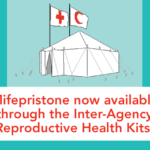
This card for humanitarian professionals provides instructions for obtaining Inter-Agency RH Kits, information on why mifepristone is now available in the kits, and a summary of WHO dosing regiments for abortion with mifepristone and misoprostol.
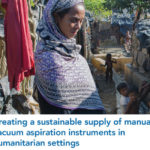
This card for humanitarian professionals provides an overview of manual vacuum aspiration (MVA) for safe abortion with a focus on humanitarian settings—plus instructions for how to obtain MVA equipment through Inter-Agency RH Kits and from DKT WomanCare.
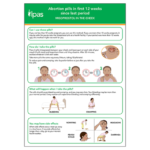
This two-page material provides simple instructions for safely using abortion with pills and is intended as a resource for health providers to share with their patients. Available in English, French, Portuguese, and Spanish.
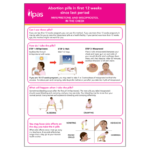
This two-page material provides simple instructions for safely using abortion with pills and is intended as a resource for health providers to share with their patients. Available in English, French, Portuguese, and Spanish.
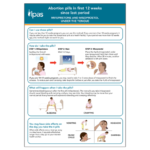
This two-page material provides simple instructions for safely using abortion with pills and is intended as a resource for health providers to share with their patients. Available in English, French, Portuguese, and Spanish.
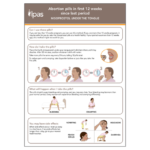
This two-page material provides simple instructions for safely using abortion with pills and is intended as a resource for health providers to share with their patients. Available in English, French, Portuguese, and Spanish.
